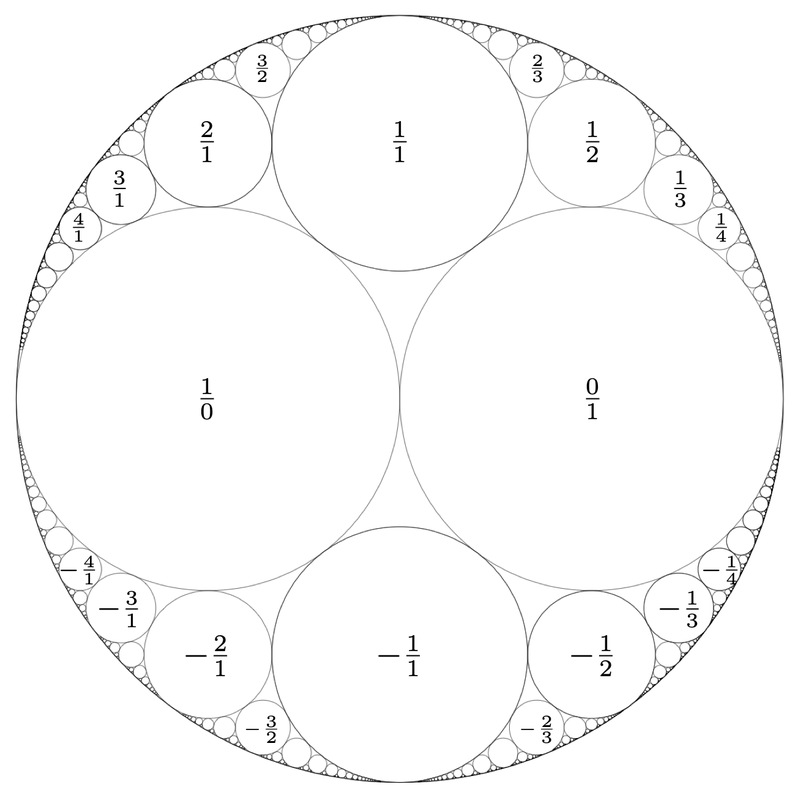个人资料
教育经历2011-2016 物理学博士 清华大学,高等研究院 导师:翟荟 2007-2011 物理学学士 清华大学,物理系 工作经历2019-present 研究员 华东师范大学精密光谱科学与技术国家重点实验室 2016-2019 Research Fellow School of Physics and Astronomy, Monash University 个人简介I am a theoretical physicist at the State Key Laboratory of Precision Spectroscopy, ECNU. I had my Ph.D training in the field of cold atom physics, however, I am also intrigued by various subjects related to quantum matter, such as condensed matter physics, quantum optics and etc. Below are selected works of mine along with brief comments. 1. Moiré physics in twisted optical lattices Ce Wang, Chao Gao, Jing Zhang, Hui Zhai, Zhe-Yu Shi Physical Review Letter 133, 163401 (2024 Featured in Physics). Xu-Tao Wan, Chao Gao, Zhe-Yu Shi arXiv: 2404.08211 (2024). These works explore the moiré physics of cold atoms in twisted optical lattices. We study cold atoms rather than conventional electrons in solid state materials such as twisted bilayer graphenes because of the high controllability of optical lattices, which offers great opptunities for exotic quantum states. In the first work, we explore the possibility for studying three-dimensional moiré physics using cold atoms. It is proposed that we may use lasers to realize two twisted spin-dependent three-dimensional optical lattices, a configuration unattainable in solid-state materials due to the impracticality of overlaying two bulk materials. As opposed to its two-dimensional counterpart, the three-dimensional moiré effect is non-abelian as the rotation operations in three-dimension are non-commutative. This non-abelian moiré leads to a rich variety of crystalline symmetries by twisting two simple cubic optical lattices. In the subsequent work, we return to two dimensions and demonstrate a hidden fractal behavior of the two-dimensional moiré effect. This leads to fasicinating structures in the result spectra of twisted optical lattices.
Above: The Apollonian gasket reveals the fractal behavior of the moiré effect.
Above: The spectrum (horizontal axis) versus the twist angle (vertical axis) of twisted square lattice. The diagram resembles the celebrated Hofstadter butterfly, while the above spectrum is calculated in a time-reversal symmetric model withour external magnetic field. See arXiv: 2404.08211, for more details. 2. Complex Contact Interaction for Systems with Short-Range Two-Body Losses Ce Wang, Chang Liu, Zhe-Yu Shi Physical Review Letters 129, 203401 (2022). In this work, we consider quantum gases with two-particle losses. We find that in the zero-range loss limit, the open system dynamics is governed by a single complex parameter, i.e. the complex s-wave scattering length, which is a natural extension of the real s-wave scattering length in the closed system. We also provide the correct renormalization and regularization methods for zero-range loss models and utilize these models for the investigation of Bose gases with weak interaction and two-particle losses. 3. Ideal-Gas Approach to Hydrodynamics Zhe-Yu Shi, Chao Gao, Hui Zhai Physical Review X 11, 041031 (2021). This work is inspired by an intriguing experiment (Physical Review X 9, 021035) conducted by Prof. J. Dalibard’s group at Paris University. In the experiment, it is discovered that for a two-dimensional strongly interacting (in the sense that the system is in the Thomas-Fermi region) Bose gas, the dynamics shows an entirely surprising and unexpected periodic behavior in a harmonic trap if the initial state is prepared as the ground state in an equilaterial triangle trap. We solve the puzzle and reveal the underlying mechanism of this periodic behavior by showing that the hydrodynamics of this system may be, surprisingly, mapped to the non-interacting dynamics of an ideal gas. Interestingly, the momentum distribution of the corresponding ideal gas system possesses a very peculiar geometric property that suggests the hydrodynamics of this Bose system has a certain Fermionic nature. 4. Dynamical fractal in quantum gases with discrete scaling symmetry Chao Gao, Hui Zhai, Zhe-Yu Shi Physical Review Letters 122, 230402 (2019). In this work we discover an unexpected relation between the Weierstrass function and a quantum system with discrete scaling symmetry. The Weierstrass function is a remarkable function discovered by Karl Weierstrass in 1872 (Mathematische werke: Abhandlungen II, Vol. 2, pp. 71–74.). It is the first instance of a real function that is continuous everywhere but differentiable nowhere. It is also arguably the first example of a self-similar fractal curve, despite that the term 'fractal' was not coined until almost a century after its discovery. Inspired by the resemblance of its self-similarity and the self-similarity of eigenstates states in a quantum system with discrete scaling symmetry(e.g. the Efimov states in a three-body system), we find that there is a hidden connection between these two worlds. Use a concrete example that can be realized in a one-dimensional ultracold atomic gas, we demonstrate that the Loschmidt amplitude of a quantum system with discrete scaling symmetry is indeed a fractal Weierstrass function. 5. Observation of the Efimovian expansion in scale-invariant Fermi gases Shujin Deng, Zhe-Yu Shi, Pengpeng Diao, Qianli Yu, Hui Zhai, Ran Qi, Haibin Wu Science 353, 371-374 (2016). This work is donw in collaboration with the cold atom experiment group led by Prof. Haibin Wu at ECNU. In this work, we generalize the celebrated Efimov physics to the time domain and observe the so-called Efimovian expansion in unitary Fermi gas. In the conventional Efimov physics, the continuous scaling symmetry in real space plays an important role. Interestingly, my colleagues and I find that it is also possible to extend this continuous scaling symmetry to the time domain by considering a time varying harmonic trap. If this continuous symmetry further breaks into a discrete one, similar to the scenario occurs in the conventional Efimov system, the system dynamics would exhibit log-periodic behavior such that the size of the atomic cloud displays a series of steps in geometric progressions during the expansion process. 欢迎对理论物理感兴趣的同学(包括本科生,研究生)加入课题组。 联系方式:zyshi@lps.ecnu.edu.cn 社会兼职研究方向超冷原子气体等量子物质的理论研究。
2. 强相互作用的量子气体,包括强相互作用的费米和玻色气体中的多体与少体物理。 3. 超冷原子气体中远离平衡的动力学,包括Efimovian膨胀,动力学分形等新奇的动力学行为。 4. 转角二维或三维晶格体系中的新奇物理。 5. 开放系统物理,包括开放超冷原子气体及激子-极化激元体系中的非厄米物理。 招生与培养开授课程科研项目学术成果Publication list: Ce Wang, Chao Gao, Jing Zhang, Hui Zhai, Zhe-Yu Shi Three-dimensional moire crystal in ultracold atomic gases, Phys. Rev. Lett. 133163401 (2024). Chang Liu, Zhe-Yu Shi, Ce Wang Weakly interacting Bose gas with two-body losses, SciPost Phys. 16, 116 (2024). Zheng Sun, Danqun Mao, Linqi Chen, Min Zhang, Zhe-Yu Shi, Yongsheng Hu, Long Zhang, Jian Wu, Hongxing Dong, Wei Xie, Hongxing Xu Observation of transition from superfluorescence to polariton condensation in CsPbBr3 quantum dots film, Light Sci. Appl. 13, 34 (2024). Xingzhou Chen, Hassan Alnatah, Danqun Mao, Mengyao Xu, Yuening Fan, Qiaochu Wan, Jonathan Beaumariage, Wei Xie, Hongxing Xu, Zhe-Yu Shi, David Snoke, Zheng Sun, Jian Wu Bose Condensation of Upper-Branch Exciton-Polaritons in a Transferable Microcavity, Nano Lett. 23, 9538 (2023). Mingyuan Sun, Chang Liu, Zhe-Yu Shi Non-Hermitian Efimov physics in dissipative three-body systems, Phys. Rev. Res. 5, 043010 (2023). Xingzhou Chen, Zheng Sun, Min Zhang, Ming Li, Zhigao Hu, Kenji Watanabe, Takashi Taniguchi, David Snoke, Zhe-Yu Shi, Jian Wu Broadband enhancement of absorption by two-dimensional atomic crystals modeled as non-Hermitian photonic scattering, Appl. Phys. Lett. 122, 041105 (2023). Ce Wang, Chang Liu, Zhe-Yu Shi Complex Contact Interaction for Systems with Short-Range Two-Body Losses, Phys. Rev. Lett. 129, 203401 (2022). Zheng Sun, Ke Xu, Chang Liu, Jonathan Beaumariage, Jierui Liang, Susan K Fullerton-Shirey, Zhe-Yu Shi, Jian Wu, David Snoke Photoluminescence Switching Effect in a Two-Dimensional Atomic Crystal, ACS nano 15, 19439-19445 (2021). Zhe-Yu Shi, Chao Gao, and Hui Zhai Ideal-Gas Approach to Hydrodynamics, Phys. Rev. X 11, 041031 (2021). Yanting Cheng, and Zhe-Yu Shi Many-body dynamics with time-dependent interaction, Phys. Rev. A 104, 023307 (2021). Ran Qi, Zhe-Yu Shi, and Hui Zhai Maximum Energy Growth Rate in Dilute Quantum Gases, Phys. Rev. Lett. 126, 240401 (2021). Weizhe Liu, Zhe-Yu Shi, Jesper Levinsen, and Meera Parish Radio-frequency response and contact of impurities in a quantum gas, Phys. Rev. Lett. 125, 065301 (2020). Weizhe Liu, Zhe-Yu Shi, Meera Parish, and Jesper Levinsen Theory of radio-frequency spectroscopy of impurities in quantum gases, Phys. Rev. A 102, 023304 (2020). Emma Laird, Zhe-Yu Shi, Meera Parish, and Jesper Levinsen Frustrated orbital Feshbach resonances in a Fermi gas, Phys. Rev. A 101, 022707 (2020). Chao Gao, Hui Zhai, and Zhe-Yu Shi Dynamical Fractal in Quantum Gases with Discrete Scaling Symmetry, Phys. Rev. Lett. 122, 230402 (2019). Zhe-Yu Shi, Shuhei M. Yoshida, Meera M. Parish, and Jesper Levinsen Impurity-Induced Multibody Resonances in a Bose Gas, Phys. Rev. Lett. 121, 243401 (2018). Shuhei M. Yoshida, Zhe-Yu Shi, Jesper Levinsen, and Meera M. Parish Few-body states of bosons interacting with a heavy quantum impurity, Phys. Rev. A 98, 062705 (2018). Zhe-Yu Shi, Ran Qi, Hui Zhai, and Zhenhua Yu Dynamic super Efimov effect, Phys. Rev. A 96, 050702(R) (2017). Yuzhu Jiang, Ran Qi, Zhe-Yu Shi, and Hui Zhai Vortex Lattices in the Bose-Fermi Superfluid Mixture, Phys. Rev. Lett. 118, 080403 (2017). Zhe-Yu Shi, and Hui Zhai Emergent gauge field for a chiral bound state on curved surface, Journal of Physics B: Atomic, Molecular and Optical Physics 50, 184006 (2017). Emma Laird, Zhe-Yu Shi, Meera M. Parish, and Jesper Levinsen SU(N) fermions in a one-dimensional harmonic trap, Phys. Rev. A 96, 032701 (2017). Shujing Deng, Zhe-Yu Shi, Pengpeng Diao, Qianli Yu, Hui Zhai, Ran Qi and Haibin Wu Zhe-Yu Shi, Hui Zhai and Xiaoling Cui Efimov physics and universal trimers in spin-orbit-coupled ultracold atomic mixtures, Phys. Rev. A 91, 023618 (2015). Zhe-Yu Shi, Xiaoling Cui and Hui Zhai Universal trimers induced by spin-orbit coupling in ultracold Fermi gases, Phys. Rev. Lett. 112, 013201 (2014). Ran Qi, Zhe-Yu Shi and Hui Zhai Fermion pairing across a dipolar interaction induced resonance, Phys. Rev. Lett. 110, 045302 (2013). Zhe-Yu Shi, Ran Qi and Hui Zhai s-wave-scattering resonances induced by dipolar interactions of polar molecules, Phys. Rev. A 85, 020702(R) (2012). 荣誉及奖励 |

|
史哲雨 |

